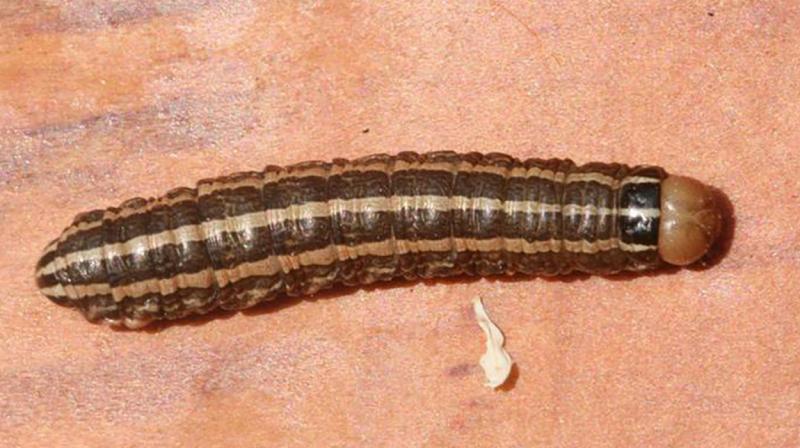Originally Submitted: June 3, 2021
While working in my garden last week, I observed a bronzed cutworm caterpillar. Although I only saw one, it was an important reminder that they are active and can cause issues for lawns and gardens. Feeding by bronzed cutworms in lawns will result in small, brown circular patches (two to 10 inches in diameter). Cutworms damage turf by clipping blades of grass close to or at the soil surface. This differs from grub damage, where the feeding is belowground on the turf roots.
Large populations of the bronzed cutworm can result in extensive lawn injury. The grass is normally able to outgrow bronzed cutworm activity, unless it is already stressed by other factors. For lawns that aren’t regularly watered, it is possible that the dry conditions could prevent the lawns from recovering from the feeding. In gardens, the bronzed cutworms can cause serious injury to young plants. As their name implies, the bronzed cutworms are capable of clipping and killing young plants. Many gardens are just getting planted, and the cool evening temperatures have prevented rapid plant growth. Therefore, it will be important to monitor newly planted seedlings to ensure that they aren’t clipped. The bronzed cutworms have a single generation each year.
Bronzed Cutworm Identification

Bronzed cutworm caterpillars are dark brown with a bronze sheen. These caterpillars have three yellow stripes that run the length of the bodies (Figure 1). Bronzed cutworm caterpillars also have three pairs of true legs and four pairs of abdominal prolegs. When fully mature, caterpillars are approximately 1.5–1.75 inches in length.
Scouting
Scouting for bronzed cutworm is difficult, because caterpillars are nocturnal and hide during the day. Therefore, scouting revolves around monitoring lawns for small brown spots and garden plants for signs of caterpillar feeding either on the leaves, wilting plants or plants cut off near the soil surface.
Management
If bronzed cutworms are active in a garden, plants can be protected by placing rings of aluminum foil or cardboard around the stems of young plants. This will prevent the cutworm caterpillars from clipping the stems and ultimately protects the plants. The foil or cardboard should be positioned one-to-two inches belowground and extend above the soil two-to-three inches. Insecticide management for bronzed cutworms is difficult because they are nocturnal. Dusting plants may also deter feeding activities, but dusts will need to be reapplied as they wash off with rain or watering.


